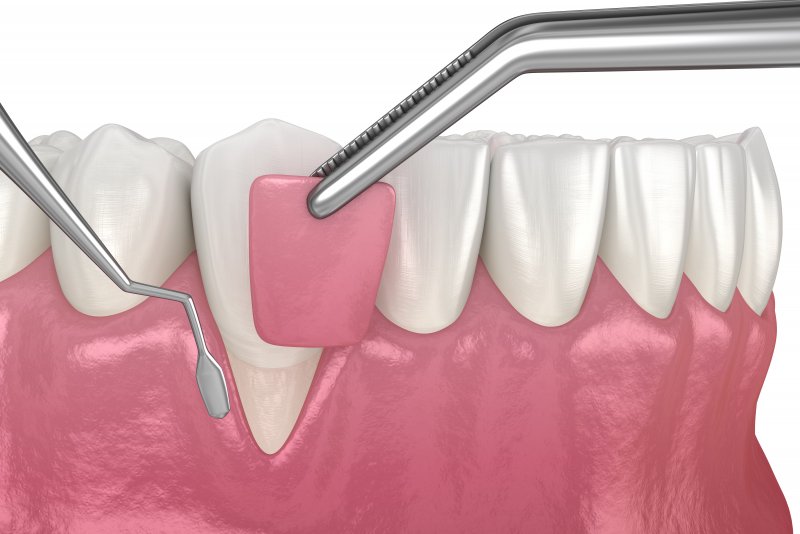
If you have noticed that your gums are feeling sensitive, tender, or red in color (rather than a healthy light pink), there’s a chance that you have untreated gum disease in need of professional attention from a periodontist. Additionally, gums that seem to pull away from teeth, making them appear longer than usual, is also a sign of advanced periodontal (gum) disease that needs professional care. In these instances, you may be recommended gum grafting, a form of gum disease therapy in Frisco. To learn what the treatment is, how it works, and essential aftercare tips to keep in mind, keep reading!
What is Gum Grafting?
Gum grafting is a specialized treatment that’s performed specifically by periodontists. Periodontists are dentists that have chosen to specialize in the diagnosis and treatment of diseases that directly affect the mouth’s gum tissue.
While there are multiple types of gum grafts that can be performed, they all accomplish relatively the same thing: replacing a small amount of gum tissue where little or no gum tissue currently exists. This occurs when bacteria breaks down and irritates the gums in such a way that it no longer covers as much tooth as it is supposed to.
The type of gum graft that is performed will vary depending on the level of gum recession that is present and where the tissue comes from. While some periodontists use already existing tissue in the patient’s mouth, others may acquire it from a tissue bank.
The Gum Grafting Process
During a connective tissue gum graft, which is considered to be the most common form of the procedure, a small incision is created in the roof of the mouth to create a flap. Tissue is then removed from this flap so it can be stitched to the gum tissue surrounding the exposed root. Finally, the flap is stitched back down with sutures so it can begin to heal and integrate with your existing gum tissue.
If the periodontist determines that the gum tissue is too thin and needs additional tissue to enlarge the gums, a free gingival graft may be performed. This is similar to a connective tissue graft, but rather than making a flap and removing tissue from under the top layer of the gums, tissue is removed directly from the palate and attached directly to the treatment area.
What to Expect After Your Gum Graft
Following the completion of your procedure, you should have no problems going home the same day to recover. During this time, it’s recommended that you:
- Avoid flossing or brushing the gum line that was treated until it has healed
- Rinse your mouth out with a dedicated rinse that controls plaque and promotes healing
- Take all antibiotics as directed
- Stick to a soft diet for the next week or two, which may include eggs, pasta, yogurt, well-cooked vegetables, gelatin, and other similar foods
- Take over-the-counter, anti-inflammatory medications as needed
Treating gum recession with gum grafting is a proven solution to preventing future breakdown of the gums and protecting your long-term oral health. If you’re experiencing gum recession, don’t wait; call a periodontist in Frisco today to get professional attention!
About the Author
Dr. Zachary Carnow has been practicing as a board-certified periodontist for nearly a decade now and has completed extensive training in periodontics that go above and beyond what is legally mandatory in the state of Texas. His expertise ensures your next gum grafting treatment is not only successful, but as comfortable as possible. To schedule an appointment with his office, you can contact him through his website.
